-
Posts
249 -
Joined
-
Last visited
Content Type
Profiles
Forums
Events
Posts posted by DCS FIGHTER PILOT
-
-
In single player, if a target jams after launching an AIM-120, the missile will proceed on its lofted trajectory and intercept it. In multiplayer it seems to be hit or miss (no pun intended). Sometimes it will do what it does in single player, other times it will go dumb. My question is, what is actually supposed to happen if a target jams after launch? Will the missile do what it does in game now or will it switch to HOJ mode and or guide on the targets last known computed position at intercept (much like when a track/lock is broken before pitbull)?
-
55 minutes ago, okopanja said:
I would say nerfing the coverage without giving those additional benefits at the same time would really be ethically questionable.
Yes I do agree. Right now from what I understand, the Sorbitsya and every other jammer in DCS (except for the jammers on the Hornet and Viper which can use deceptive techniques), simply use barrage jamming (and possibly sweep jamming for the F-14??). Anyway, as basic as this is it can still prove extremely difficult (partly due to the lack of ECCM in game) to effectively attack a target that has protection from all sides. Even if more advanced jamming techniques are introduced, all of the jamming "hocus pocus" can only go so far as the jammers physical limits. This opens up the door for more complex strategies to effectively take down a target that's jamming. Anyway those are just my thoughts.
-
-
13 hours ago, peterbrownbyu said:
Depending on what specific systems you're talking about, they may very well be omnidirectional. In fact, in the case of self defense jammers, they typically are (at least as far as public info suggests). Also, correct me if I'm wrong, but it seems like you're assuming that jamming pods are most efficient when they're pointing directly at the emitter they're countering, and this typically isn't the case. Antennas (generally, depending on the type) are typically most powerful when they're broadside to the receiver, so the fact that the aircraft are not hot or cold to you would probably increase their jamming effectiveness, not decrease it
Plus, ironically, the further away jammers are from you the more effective they usually are up to a point. Inverse square laws and all that. If you're mathematically inclined, give this a read if you have time. It's unclassified and does a great job of laying out the foundations of how ew systems work
Not every system allows you to put energy on a certain azimuth, those are typically reserved for electronic attack systems, like the ALQ-99E pictured below. You can see how the different jamming antennas physically swivel to put jamming energy where it needs to go

Newer systems, like the ALQ-249 pictured here, use phased arrays to steer the jamming beams. This takes up quite a bit of space and makes for a wide pod
Unfortunately air to air radars and ECM systems are usually the more secretive ones, so there's less public info out there. Fortunately however, that is the most boring part of EW, and the cool part of EW (namely electronic attack in support of the SEAD mission) is much more well documented. Hopefully we see some improvements on that front, and maybe if we're good we'll get accurate simulations of SAM radars / dedicated jamming platforms / wild weasel airframes in DCS as a treat

Thanks for the link. Lately I have been reading a bunch of stuff on EW but a lot of it is hit or miss (which is not surprising given how much is classified).
In regards to what I am saying about the jamming pods, I am simply wondering (much like how a radar cannot scan outside of its gimbal limits), how can the ECM pods carried by the planes in my example (which appear to have fixed antennas pointing forward and aft (and correct me if I am wrong)) jam a radar source outside of their antenna limits? In the example, it appears as if I was outside of the azimuth scan limits of the jammer antennas and yet I was still being jammed. Again, it seems like there are no ECM coverage limits currently implemented in DCS which makes jamming too effective (at least in this case). Hopefully as Mike_Romeo pointed out though this will be addressed in the near future.
-
Much like a radar can only cover one area of the sky at a time and has azimuth and elevation limits, so too should any ECM pod/module installed on an aircraft. Currently in game, (as far as I can tell), any aircraft with ECM capability can jam any radar source at any relative elevation and azimuth (see images and track below illustrating basic example). In the future, I am hopeful ED will model some sort of ECM coverage limit for each jammer that will further contribute to the realism of DCS. Even if said coverage limits are "unrealistic" (i.e. too severe or too lenient), it will still be better than what we have now.
Edit: For anyone wondering what I am trying to show in the example, it is that my aircraft (the F-16 to the right in figure one) is being jammed by every REDFOR aircraft (to the left in figure one) even though I am very likely outside of their ECM jammers azimuth limit.
-
 3
3
-
-
Allow me to also point out that this issue does not seem to affect the SD-10 (at least not as severely).
-
 1
1
-
-
I would also like to point out that if you try this defense against in AMRAAM in another game....... you will almost always end up getting hit. I think part of the problem here in DCS is the proximity fuse does not seem to be working or is not modeled.
-
 1
1
-
-
10 hours ago, MARLAN_ said:
One should not expect to be successful defeating an AMRAAM with a notch in almost any situation except the absolute most perfect situations (the real defense uses BVR timelines and kinetic defeats - this by the way is public release information).
Correct, notching an AMRAAM should be a fluke not a certainty. In game it currently appears we have the latter.
-
 2
2
-
-
17 hours ago, Hobel said:
I'll just rate your tracks now.
in "Notch2" loses the missle exactly at the point where you reach the 48kmh/25.9knots
"notchone" the same, 48kmh/25.9knots
In "notch3" the difference is already bigger, but you are also very close to the ground here, there is also a report on this, which could be related to this
Edit: maybe the chaff also falsify it, doesn't the Rio also activate the ECM automatically in the F14 or something?
And to check the figures again.Here is a Tacview with the parameters in a very clean environment.
the left helicopter flies 55kmh TAS is always hit
Right helicopter 53kmh TAS and is not hit.these are exactly the areas we see in the track above One and Two, 3 could have additional reasons
Tacview-20231217-003954-DCS.zip.acmi 56.63 kB · 6 downloads
Thanks for the review. Would you be able to tell me whether or not I stayed in the notch or did I eventually come out of it? As you can see in the tracks, the missiles never reacquired and missed.
-
I think this video basically sums up the current state of the game (intended or not)
-
28 minutes ago, GGTharos said:
Fair question - the irony is that I agree with you, but the catch is this: What good is the community opinion (1) ? Maybe you believe this is harsh, but the fact is, most of the community doesn't know, those who know don't talk and those who have a better idea of what's going on without fear of spilling the beans so to speak are far and few inbetween but they are around.
So, I think the goal here is to ask the right questions and get the right information, eg:
What does it mean that the missile is too easy to notch? A couple of tracks is neat but doesn't mean anything, ie. 'works as designed' within the context of the game - closure < 25kts (as reported above) = break-lock.
So, are we now going to talk about a target recovery attempt? It has been done in this game before. it was successful and guess what ... (1) people complained the 120 was 'too good' now, you actually had to stay in the notch and execute very accurately to make the thing stop hounding you. So ED turned that feature off.
But suppose this comes back - now what? How do we deal with ECM and countermeasures, because obviously the missile could/should be affected (sometimes positively!)?
Basically, saying 'it's too easy to notch' is stating a gut feeling without offering what it should be, never mind how it should be.
One problem is that the notch works if you merely fly through it. Another problem is that if you go hot to cold aspect, it's possible (not certain but possible) that the in-game doppler tracker will give up. Essentially 'blinking' through the notch may constitute a break-lock. The simulation used to be much simpler than it is today, but some simple effects appear to remain. Without any debug prints though (which we will not be getting) it's really hard to judge what's going on any more.
Understood.
Like you mentioned, it appears as if all one has to do in order to notch an inbound AMRAAM is to merely “hit” the notch. After that the missile seems to rarely recover. It’s as simple as rolling left or right until you find the sweet spot and then boom, missile trashed. This (along with the missile appearing to just give up tracking for no apparent reason on a hot to cold target) is the most frustrating part of this behavior.
-
2 minutes ago, Hobel said:
There could be different things that play into it, in a clean environment I come up with this number.
Otherwise can you show a track/tacview so that we are all talking from the same point of view.EDIT: sorry will look tracks later.
Okay let’s be a bit more lenient and say the velocity gate is plus or minus 50 knots. At this point, a 700 knot defender would have to fly within an arc spanning 8 degrees. Again from the examples I witnessed, at least one of the missiles should still be able to track the target.
-
1 hour ago, Hobel said:
~25knots
Tested with and without ground clutter.
This applies to an Aim120 that is in search mode, if it has a track it could be slightly different
I determined this value a few weeks ago, but it should still be up to date.
So if my understanding is correct, given a target traveling at 700 knots roughy off the nose of an inbound AMRAAM, they would have to fly within an arc spanning approximately 4 degrees in order to notch it. From what I have observed in game, the AMRAAM gets notched well outside of these parameters. For example (as mentioned above) I often observe high speed defenders (700 knots plus) “notch” several inbound missiles all coming in from different aspects.
-
 1
1
-
-
2 hours ago, GGTharos said:
RWR's being 'too accurate' isn't the problem, it's a truly minor part of the problem which you've already demonstrated by mentioning the cat's RWR, so why mention it at all? You're not offering a solution, and you're not offering any reasoning with respect to how easy/hard it should be notch, so your report as is leads to 'there's nothing to do here'.
Forgive me but I am really not understanding the need for this border line hostility. Perhaps you failed to read the title which had a question mark in it. My goal here was to get feedback from the community, not to outright claim something. Granted perhaps my choice of words in some areas revealed my bias towards thinking the current in game AMRAAMs are too easy to notch. Supporting this line of thinking, I have routinely observed defenders successfully “notch” several inbound AMRAAMs all coming in from different aspects. The next time I see and capture this behavior, I will be sure to post it. Though perhaps the solution here is to move this post to another section since I am not officially claiming something is broken at this time. I suppose that is for the moderators to decide.
-
 6
6
-
-
Been doing some testing lately and it still seems like the AMRAAM (and other ARH missiles) can get notched too easily. As mentioned by others, part of this problem comes from the fact that the RWR's of most planes in game are too accurate. Still, even in planes like the F-14 (where the RWR is much less accurate), notching these missiles is still pretty easy. Another problem that seems to contribute to this is that once active, the missile appears to ignore guidance data from the shooters radar (provided they are still tracking/locking the target), even if the missiles radar loses track. From what I understand (and please correct me if I am wrong), even if the missile loses lock, the shooter should still be able to guide it in until impact (if in STT) or until the missile reacquires the target again. Thoughts?
Also out of curiosity , in game, what is the current velocity gate on the AIM-120 as I would like to do some very basic calculations with this information.
Track Descriptions:
Track One: AIM-120C loses lock and misses F-18 at medium altitude. No chaff or ECM is used in the defense. Additionally, once missile is "notched" missile launch tone terminates providing positive feedback to pilot that "notch" was successful.
Track Two: AIM-120C loses lock and misses F-18 at low altitude. No chaff or ECM is used in the defense. Additionally, once missile is "notched" missile launch tone terminates providing positive feedback to pilot that "notch" was successful.
Track Three: AIM-120C loses lock and misses F-14 at low altitude. No ECM is used in the defense. Missile launch tone persistent even while in the "notch".
-
 3
3
-
-
Are these much improved radar detection and tracking ranges indented? As you can see in the track, I am able to successfully detect and lock and F-16 out past 80 nautical miles. This is F-14/F-15 level stuff here.
-
 1
1
-
-
After reading up a bit on ECM jamming, its clear that ED's modeling of it in game is still extremely simplified. For instance, fighters with noise jammers, such as the F-16, the FC3 aircraft, the Jf-17, the M-2000c and the F-14, can jam the entire operational radar spectrum with seemingly unlimited power as there appears to be no limit on how many radars can be jammed at once. This would seem to suggest that ED has implemented an unrealistic form of "barrage jamming" for the jammers of these airplanes.
On the flip side, up to this point, jamming of surveillance radars (such as the ones found on AWACS), appears to be impossible making fighters with DL nearly immune to any loss of SA.
The only airplanes that seem to model ECM jamming in more depth are the Hornet and Viper which appear to use deceptive jamming tactics (i.e. RGPO, VGPO, etc.) to break radar locks. However even this seems to greatly simplified as regardless of the victims radar power, the burn through range seems to be set at a static value of about 20 nautical miles. Additionally once the deceptive jammer is activated, it appears to act as a noise jammer for any other radar pointed at it.
Are there any plans to change/improve the modeling of ECM in DCS or this the best we can hope for?
`
-
 5
5
-
 1
1
-
-
On 9/10/2023 at 4:51 PM, Gunfreak said:
We don't even have survivable water landings in DCS.
Not only that but even if you do manage to bail out/eject over the water, the pilot will immediately drown the second they touch the water.

-
 3
3
-
-
13 minutes ago, Gunfreak said:
I rarely die from missile hit in the F14, unless the missile hits me in the face.
They actually just updated the pilot damage model to where now he can be killed in flight. Before, the only way to die from anything was to explode, from like a phoenix hitting you in the face, or crashing. Also before, Jester would always be incapacitated the second something came in contact with the jet.
-
33 minutes ago, Default774 said:
If you have any specific examples of this happening I'll try to reproduce it and report it seperately
As I mentioned, it seems to be more of a multiplayer issue. I tried recreating it in the mission editor but no go. I suppose the best thing to do is to try an capture it when it happens. I will say the behavior is very similar to your first post where the missile can't decide on whether to track the plane or the missile it fired.
-
As of right now in game, pretty much any missile (large or small) that ends up touching your plane (large or small) kills your pilot. The only exception to this seems to be the FC3 aircraft that can take an excessive amount of damage before the pilot is killed.
There are many in game examples that I can present here where the fatal impact of a missile is questionable but I have decided to use two just to get my point across. Apparently an AIM-9X, with a 9.4 kg warhead, that ends up hitting an F-14 or F-15E (some of the largest fighters in game) in the stern at relatively low speed proves almost always fatal for the entire crew. Tracks Below.
To further support the argument that pilots in DCS are killed too easily, I would like to point out a real world example.
Captain Scott O'Grady was an F-16 pilot who was shot down by an SA-6 over Bosnia and Herzegovina in June 1995. Granted, its impossible to know exactly what happened (i.e. where the missile hit his plane, whether or not it was a proxy fuse etc.) but he did survive and apparently with no major injuries.
Other examples can be found here
-
 4
4
-
-
On 9/6/2023 at 6:20 PM, Flappie said:
Thanks for the heads up. This issue is now reported.
I would also like to point out that the Aim-120B will often times chase a missile fired from the target aircraft instead of the aircraft towards the end of flight. At least this is the case in MP.
-
On 7/22/2023 at 8:02 AM, vovochen said:
Thank you everyone for participating,
Especially the HeatBlut Person who took his time,
I have come to terms with the difficult truth that the Phoenix is currently as it should be in the game.
Best Wishes !Would you be able to share with the community how you arrived at this conclusion?
-
It should go without saying that in the heat of combat, it is often necessary to rapidly change the scan zone of a radar. When using Jester to do so in the F-14, it can take upwards of 10 seconds to change the scan zone of the radar antenna, scan mode, and display range to where it needs to be to track a target. Such a delay during close range engagements often results in the Tomcat, with Jester as the RIO, finding itself in a very undesirable situation.
An experienced human RIO on the other hand, can reposition the radar antenna, change modes, range, etc., within seconds (see attached).
If Jester is the only RIO available however, I recommend the following to make things more realistic. As soon as a command is issued in the Jester menu to change a radar parameter, the result should be close to immediate. After several commands, the time it takes for Jester to change everything, will be much closer to what a human RIO could do.
Again, it should go without saying but in reality, (given good SA), the RIO should know which target to focus on without much direction from the Pilot (and even if he did not, its a simple "Track the low Bandit to the left!" kind of speach through the ICS).
Hopefully such a change would bring about more realism and make the Tomcat more competitive as this is its largest hindrance as of know in my opinion.
-
 1
1
-


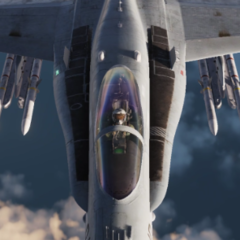
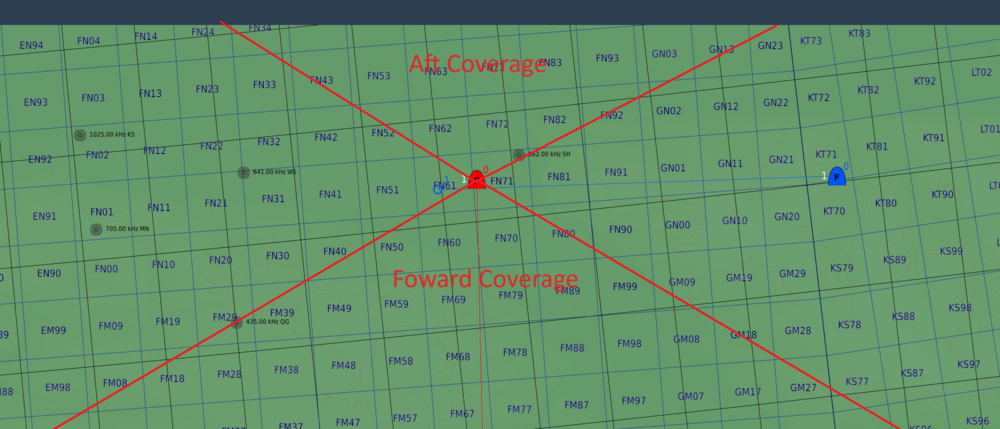
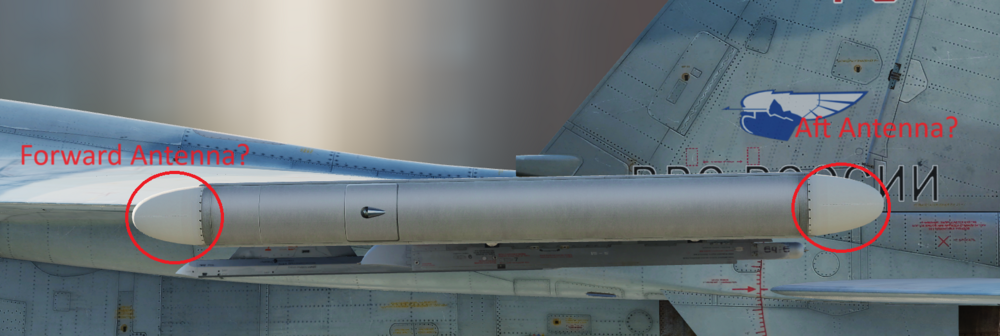

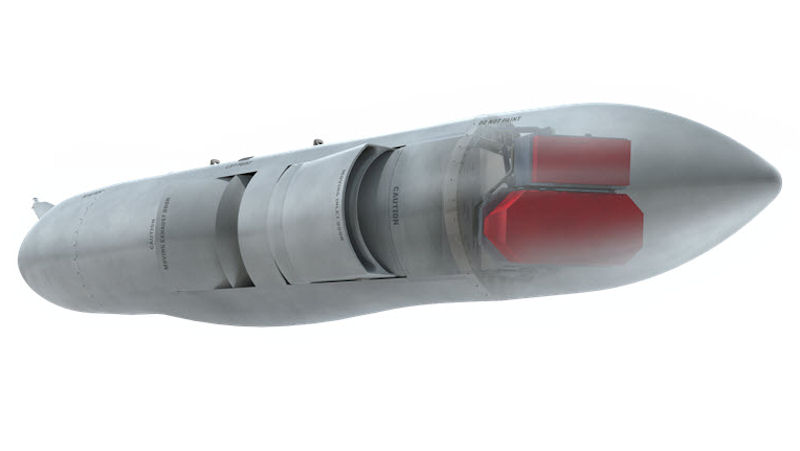

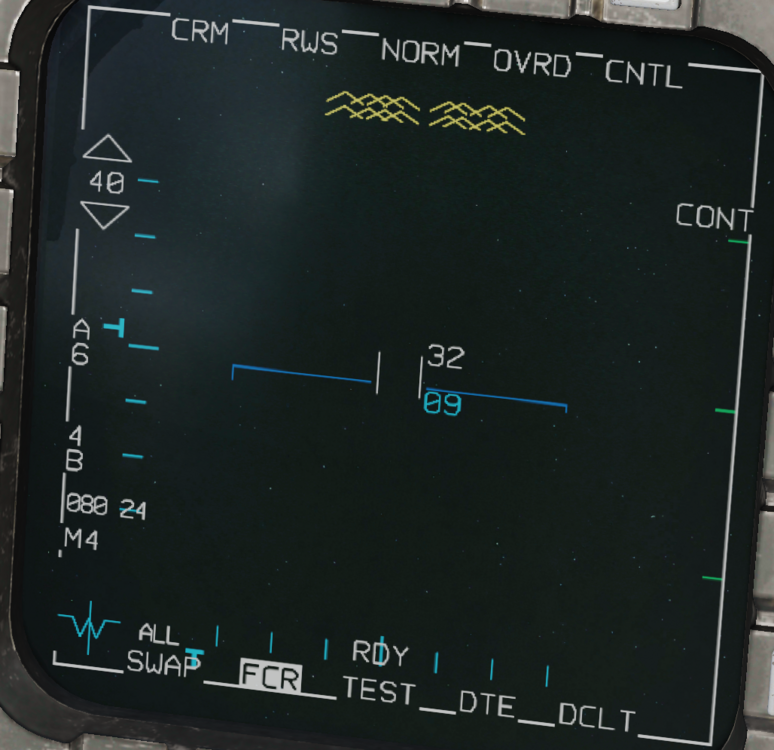
AIM-120 Still Too Easy to Notch?
in Weapon Bugs
Posted · Edited by DCS FIGHTER PILOT
Just out of curiosity, what do you know that I don’t? Sure there are multiple ECM jamming techniques out there but there are also many ECCM techniques as well. Do you perhaps know of some “all powerful” ECM jamming method that negates all ECCM methods and makes a missile near useless? If so, DCS is nowhere near realistic as most missiles (given enough energy) will intercept their target even if they’re jamming.